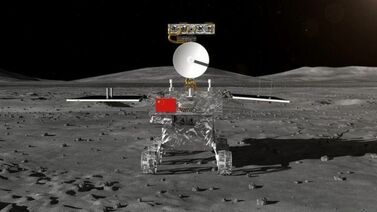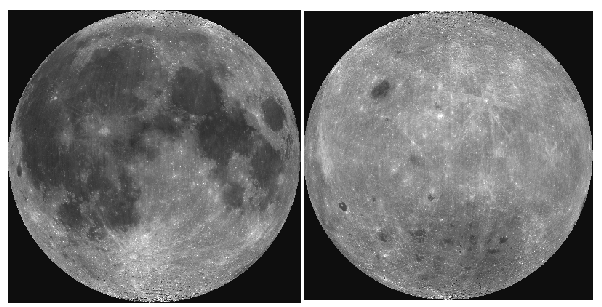Mary UpritchardInnovaSpace Admin Director
The InnovaSpace team send their wholehearted congratulations to the Chinese National Space Administration (CNSA) for the landing today (Thursday, 3rd January 2019) of their unmanned Chang'e-4 space probe on the far side of the Moon, the first spacecraft to ever land on the ‘dark side’. The probe landed exactly on target in the South Pole - Aitken Basin, which is the Moon's largest and oldest recognised impact crater.
A small lunar rover, called Yutu 2 or Jade Rabbit 2, descended from the lander onto the surface of the Moon, sending the first panoramic images of a landscape that has never been seen from the surface before. All being well, the rover will explore the terrain and perform a number of tasks, including the measurement of ground composition and the use of ground-penetrating radar to probe below the surface.
 Chinese lunar rover Image credit: EPA/CNSA Chinese lunar rover Image credit: EPA/CNSA
The first lunar low-frequency radio astronomy experiment will also be conducted, together with an exploration for evidence of water, and an attempt to grow potatoes in a mini biosphere, among other tasks, all of which could reveal much new and valuable information about the Earth's only permanent natural satellite.
"Since the far side of the moon is shielded from electromagnetic interference from the Earth, it's an ideal place to research the space environment and solar bursts, and the probe can 'listen' to the deeper reaches of the cosmos," said Tongjie Liu, deputy director of the Lunar Exploration and Space Program Center for the CNSA.
China became only the third nation to carry out a lunar landing, after the United States and Russia, when it landed a previous lunar rover, Chang’e-3, on the near side of the Moon in December 2013. But Chinese ambitions go much further than landing rovers on the Moon, with reports that they aim to put astronauts on the Moon by 2036 (no human feet have stepped on the lunar surface since 13th December 1972, following the end of the American Apollo missions). Chinese sights are also focused on Mars, with its first Mars probe scheduled to carry out orbital and rover exploration around 2020, and further plans for a fully operational permanent space station by 2022.
Well done to everyone at the CNSA and we look forward to hearing more on the progress of the Chang'e-4 mission!
Explanatory point: The far side of the Moon is also known as ‘the dark side’, which is in fact an inaccurate description, as both hemispheres of the Moon receive just as much sunlight as each other. However, the far side can never be seen from Earth due to the Moon rotating at the same speed that it rotates around the Earth, which results in us always seeing the same side. In fact, the two sides of the Moon are actually quite different in appearance, as can be seen in the below images.
Comments are closed.
|
Welcometo the InnovaSpace Knowledge Station Categories
All
|
InnovaSpace Ltd - Registered in England & Wales - No. 11323249
UK Office: 88 Tideslea Path, London, SE280LZ
Privacy Policy I Terms & Conditions
© 2024 InnovaSpace, All Rights Reserved
UK Office: 88 Tideslea Path, London, SE280LZ
Privacy Policy I Terms & Conditions
© 2024 InnovaSpace, All Rights Reserved

 RSS Feed
RSS Feed